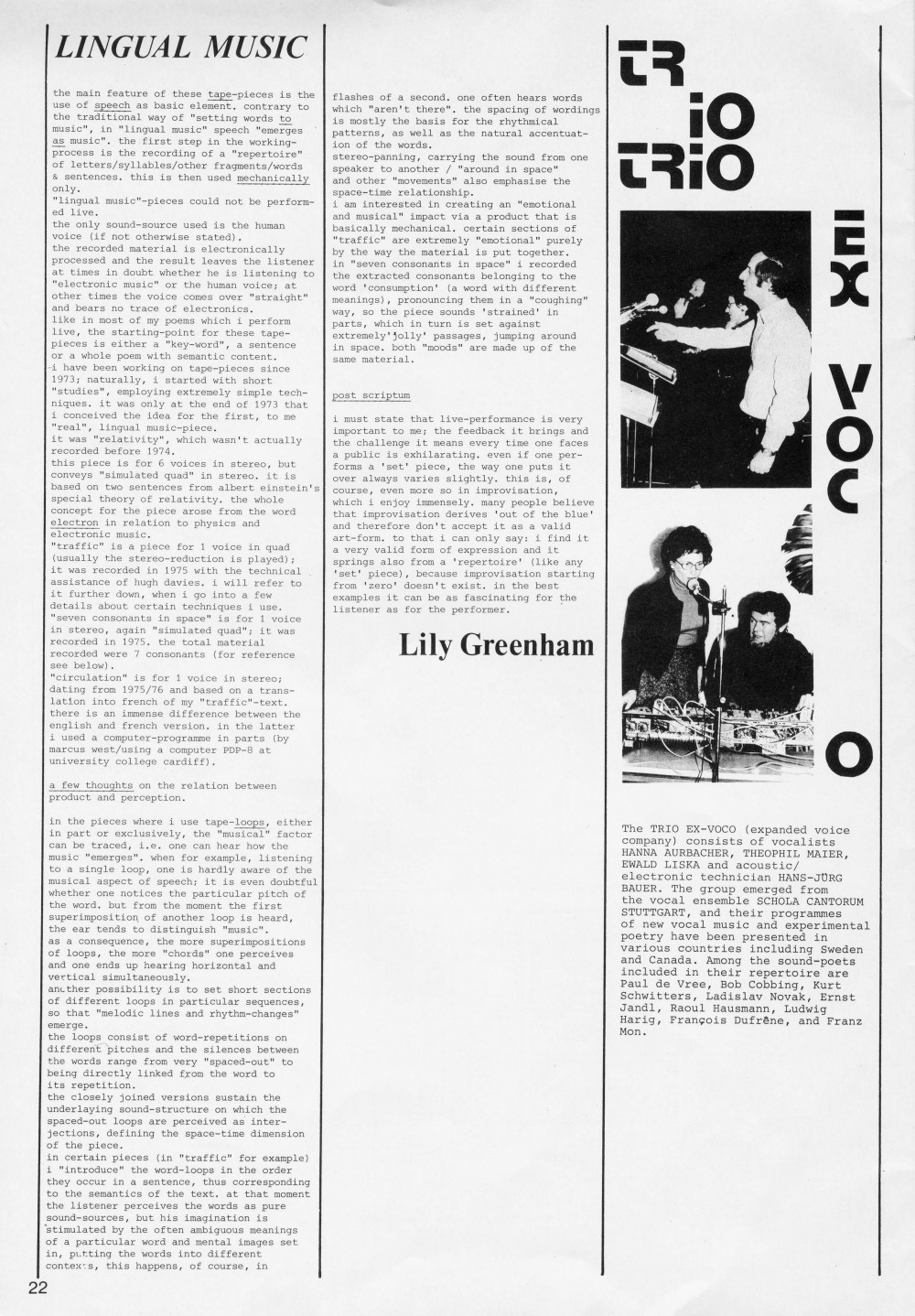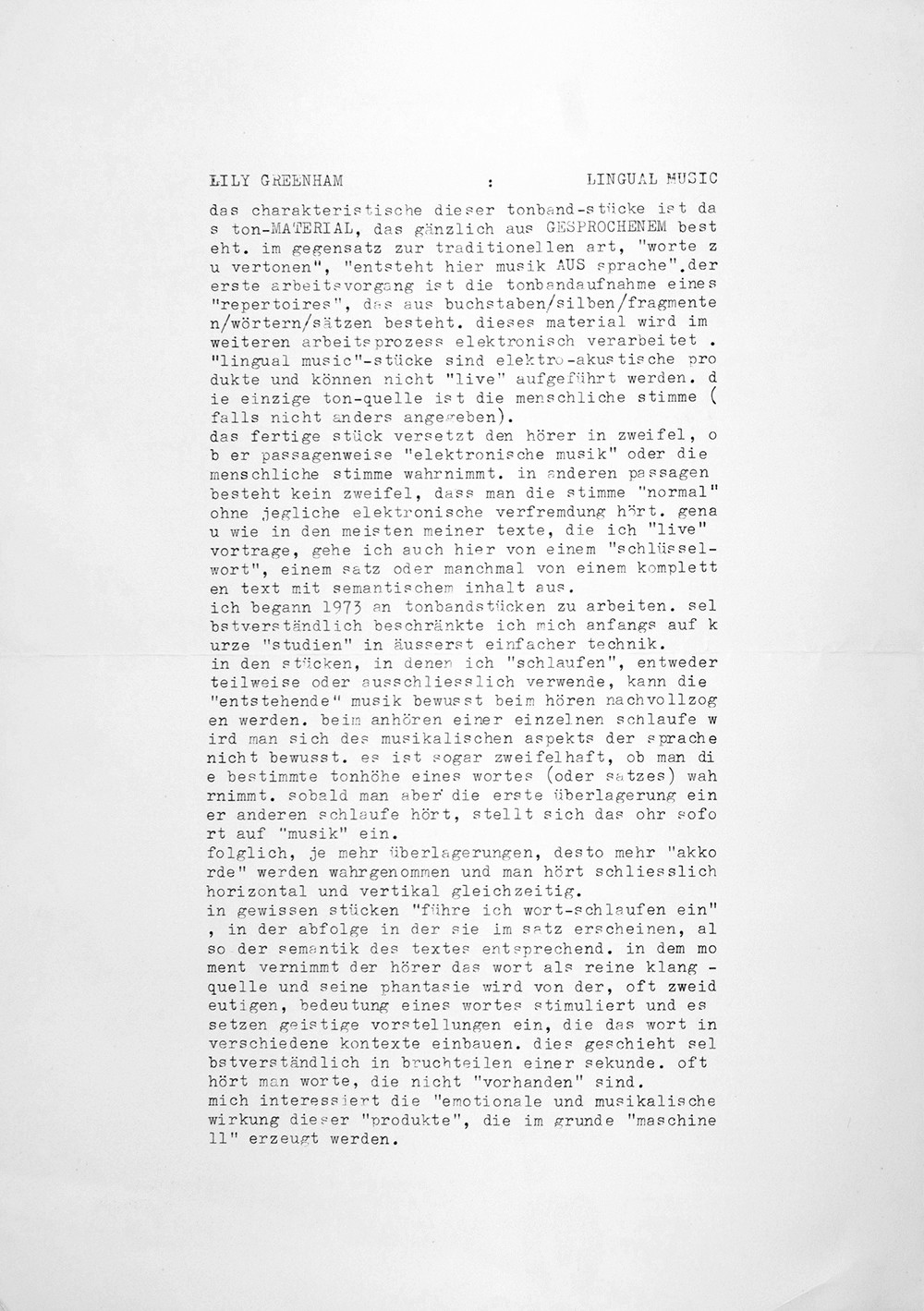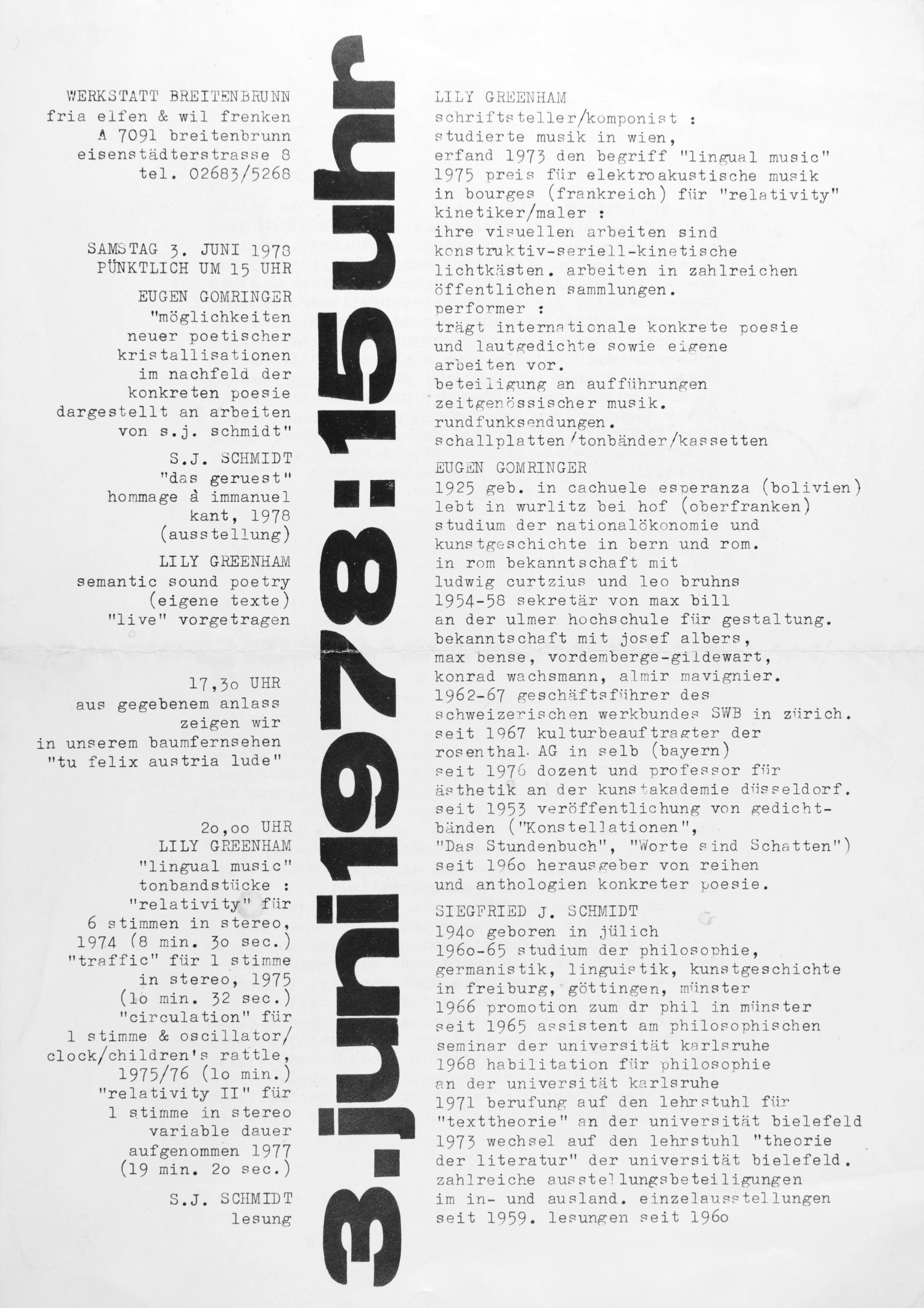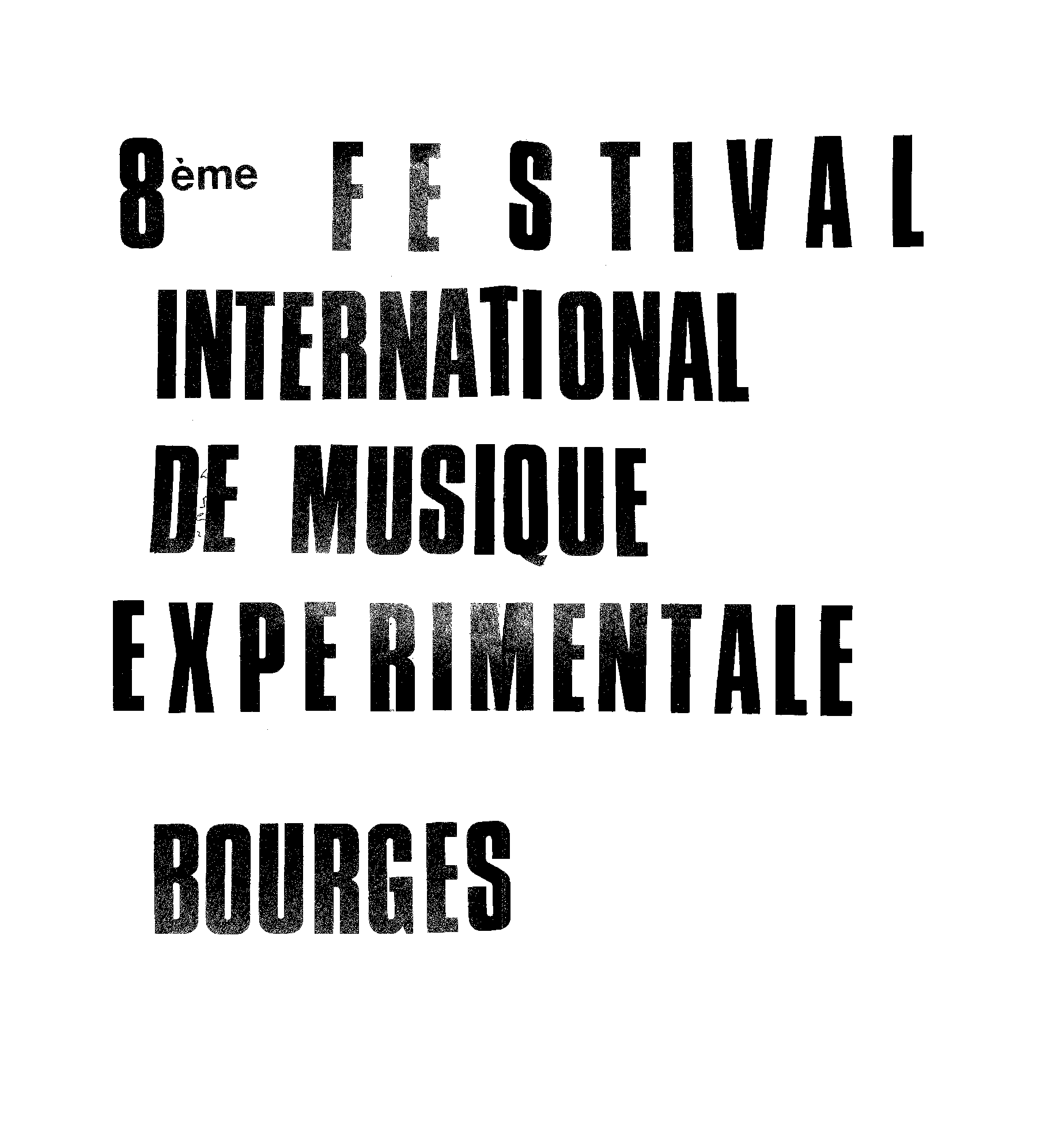





Lingual Music



the main feature of these tape-pieces is the use of speech as basic element. contrary to the traditional way of "setting words to music", in "lingual music" speech "emerges as music". the first step in the working-process is the recording of a "repertoire" of letters/syllables/other fragments/words & sentences. this is then used mechanically only.
"lingual music"-pieces could not be performed live.
the only sound-source used is the human voice (if not otherwise stated).
the recorded material is electronically processed and the result leaves the listener at times in doubt whether he is listening to "electronic music" or the human voice; at other times the voice comes over "straight" and bears no trace of electronics.
like in most of my poems which i perform live, the starting-point for these tape-pieces is either a "key-word", a sentence or a whole poem with semantic content. i have been working on tape-pieces since 1973; naturally, i started with short "studies", employing extremely simple techniques. it was only at the end of 1973 that i conceived the idea for the first, to me "real", lingual music-piece.
it was "relativity", which wasn’t actually recorded before 1974.
this piece is for 6 voices in stereo, but conveys "simulated quad" in stereo. it is based on two sentences from albert einstein’s special theory of relativity. the whole concept for the piece arose from the word electron in relation to physics and electronic music.
"traffic" is a piece for 1 voice in quad (usually the stereo-reduction is played); it was recorded in 1975 with the technical assistance of hugh davies. i will refer to it further down, when i go into a few details about certain techniques i use. "seven consonants in space" is for 1 voice in stereo, again "simulated quad"; it was recorded in 1975. the total material recorded were 7 consonants (for reference see below).
"circulation" is for 1 voice in stereo; dating from 1975/76 and based on a translation into french of my "traffic"-text. there is an immense difference between the english and french version. in the latter i used a computer-programme in parts (by marcus west/using a computer PDP-8 at university college cardiff).
in the pieces where i use tape-loops, either in part or exclusively, the "musical" factor can be traced, i.e. one can hear how the music "emerges". when for example, listening to a single loop, one is hardly aware of the musical aspect of speech; it is even doubtful whether one notices the particular pitch of the word. but from the moment the first superimposition of another loop is heard, the ear tends to distinguish "music".
as a consequence, the more superimpositions of loops, the more "chords" one perceives and one ends up hearing horizontal and vertical simultaneously.
another possibility is to set short sections of different loops in particular sequences, so that "melodic lines and rhythm-changes" emerge.
the loops consist of word-repetitions on different pitches and the silences between the words range from very "spaced-out" to being directly linked from the word to its repetition.
the closely joined versions sustain the underlaying sound- structure on which the spaced-out loops are perceived as interjections, defining the space-time dimension of the piece.
in certain pieces (in "traffic" for example) i "introduce" the word-loops in the order they occur in a sentence, thus corresponding to the semantics of the text. at that moment the listener perceives the words as pure sound-sources, but his imagination is stimulated by the often ambiguous meanings of a particular word and mental images set in, putting the words into different contexts; this happens, of course, in flashes of a second. one often hears words which "aren’t there". the spacing of wordings is mostly the basis for the rhythmical patterns, as well as the natural accentuation of the words.
stereo-panning, carrying the sound from one speaker to another / "around in space" and other "movements" also emphasise the space-time relationship.
i am interested in creating an "emotional and musical" impact via a product that is basically mechanical. certain sections of "traffic" are extremely "emotional" purely by the way the material is put together. in "seven consonants in space" i recorded the extracted consonants belonging to the word "consumption" (a word with different meanings), pronouncing them in a "coughing" way, so the piece sounds "strained" in parts, which in turn is set against extremely "jolly" passages, jumping around in space. both "moods" are made up of the same material.
i must state that live-performance is very important to me; the feedback it brings and the challenge it means every time one faces a public is exhilarating. even if one performs a "set" piece, the way one puts it over always varies slightly. this is, of course, even more so in improvisation, which i enjoy immensely. many people believe that improvisation derives "out of the blue" and therefore don’t accept it as a valid art-form. to that i can only say: i find it a very valid form of expression and it springs also from a "repertoire" (like any "set" piece), because improvisation starting from "zero" doesn’t exist. in the best examples it can be as fascinating for the listener as for the performer.